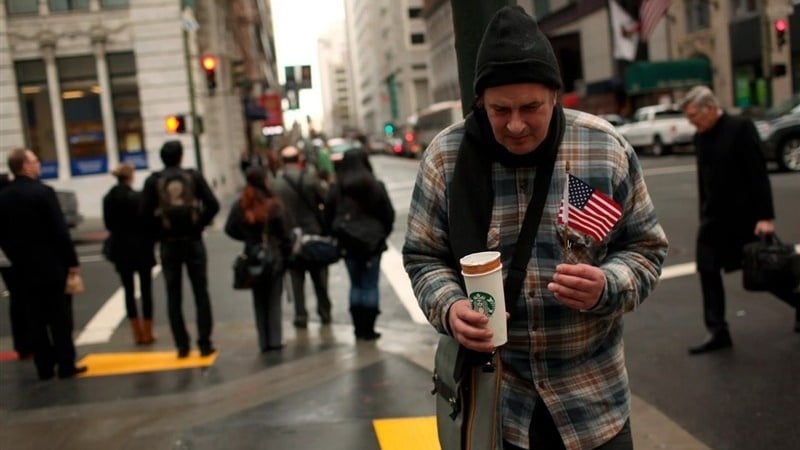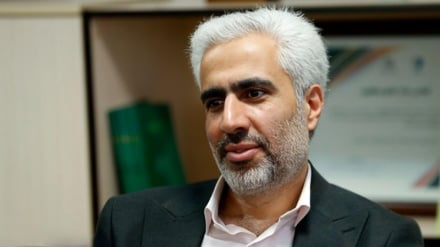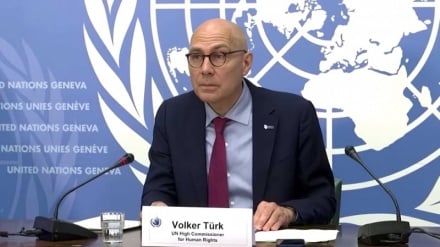How U.S. government leaves millions of citizens hungry
-

How U.S. government leaves millions of citizens hungry
Pars Today – With the complete halt of payments from the U.S. food assistance program, more than 42 million citizens, from children to the elderly, have been left without a daily food source since November 1.
November 1, 2025, will mark a dark day in the social history of the United States. The U.S. Department of Agriculture (USDA) officially announced that starting Saturday, payments from the Supplemental Nutrition Assistance Program (SNAP) will be completely halted.
This program, which provided monthly financial assistance to over 42 million Americans—including 10 million children, 6 million seniors, and millions of people with disabilities—to purchase food, will be halted for the first time in its 90-year history. The average monthly benefit of $190 per person, totaling around $8 billion per month, will no longer be deposited into recipients’ accounts.
Experts have described this disaster as “the largest hunger crisis since the Great Depression.” It is not only the result of a 31-day federal government shutdown but also a direct consequence of Trump administration budget policies and congressional deadlock.
The U.S. federal government shutdown began on October 1, 2025, and continues due to the lack of agreement on the 2026 fiscal year budget. The One Big Beautiful Bill Act, signed by Donald Trump, cut over $187 billion from the SNAP budget through 2034. However, the USDA’s emergency funding remained available until the end of November.
The Department of Agriculture has officially stated: “With the exhaustion of funds, payments are impossible.” This decision has been implemented despite lawsuits filed by 25 states and the District of Columbia against the federal government.
The suspension of the Supplemental Nutrition Assistance Program (SNAP), starting Saturday, will have immediate and devastating effects on American society. The consequences of this cut extend beyond individual hunger, triggering a chain of social, economic, and health crises.
Health and malnutrition crises are among the most pressing concerns. Children, who make up 40% of SNAP recipients, face risks of stunted growth, reduced academic performance, and increased chronic illnesses. Authorities have warned that “millions of American children are at risk of severe hunger.” Hospitals in poorer states have also reported a 25% increase in admissions of patients showing signs of malnutrition since last week.
Another issue is the economic blow to local communities. According to USDA studies, every dollar of SNAP assistance generates $1.50 to $1.80 in economic activity. With the $8 billion monthly aid cut, food retailers—especially in rural and low-income urban areas—are facing a sharp decline in sales.
More than 250,000 stores enrolled in the SNAP program have announced plans to reduce their stock of essential food items to prevent financial losses. This is expected to exacerbate localized inflation in food prices.
Pressure on food banks and social services is another consequence of this crisis. A food aid organization in Pittsburgh announced that its supplies would only last four days. In New York, food banks have seen kilometer-long lines, with many leaving without receiving assistance.
States are trying to respond with local budgets, but these measures are insufficient and unsustainable. California, the largest SNAP recipient, has announced that without federal assistance, more than 4 million people in the state will face hunger by the end of December.
Political and social consequences are also emerging from this crisis. Democrats have called Trump “the first president to impose hunger on millions of people.” In response, Republicans accused Democrats of “budget hostage-taking.”
Senator Ben Ray Luján introduced an independent bill to provide emergency funding for SNAP, but it faced opposition from the Republican majority.
In major cities, public protests have begun, with the slogan “Food is a right, not a privilege” echoing through New York, Los Angeles, and Chicago. The SNAP cut is not merely a budgetary issue; it symbolizes the deep divide within American society.
In a country home to some of the wealthiest individuals in the world, 42 million people—more than the population of Canada—are left without a food source. This crisis has eroded public trust in government institutions and raises fundamental questions about national priorities: Are defense, tax cuts for the wealthy, and infrastructure projects more important than preventing child hunger?
In any case, if Congress does not approve the budget in the coming days, millions of families will spend Thanksgiving and Christmas without food. This is not only a humanitarian disaster but also a lasting wound on the body of the United States.


